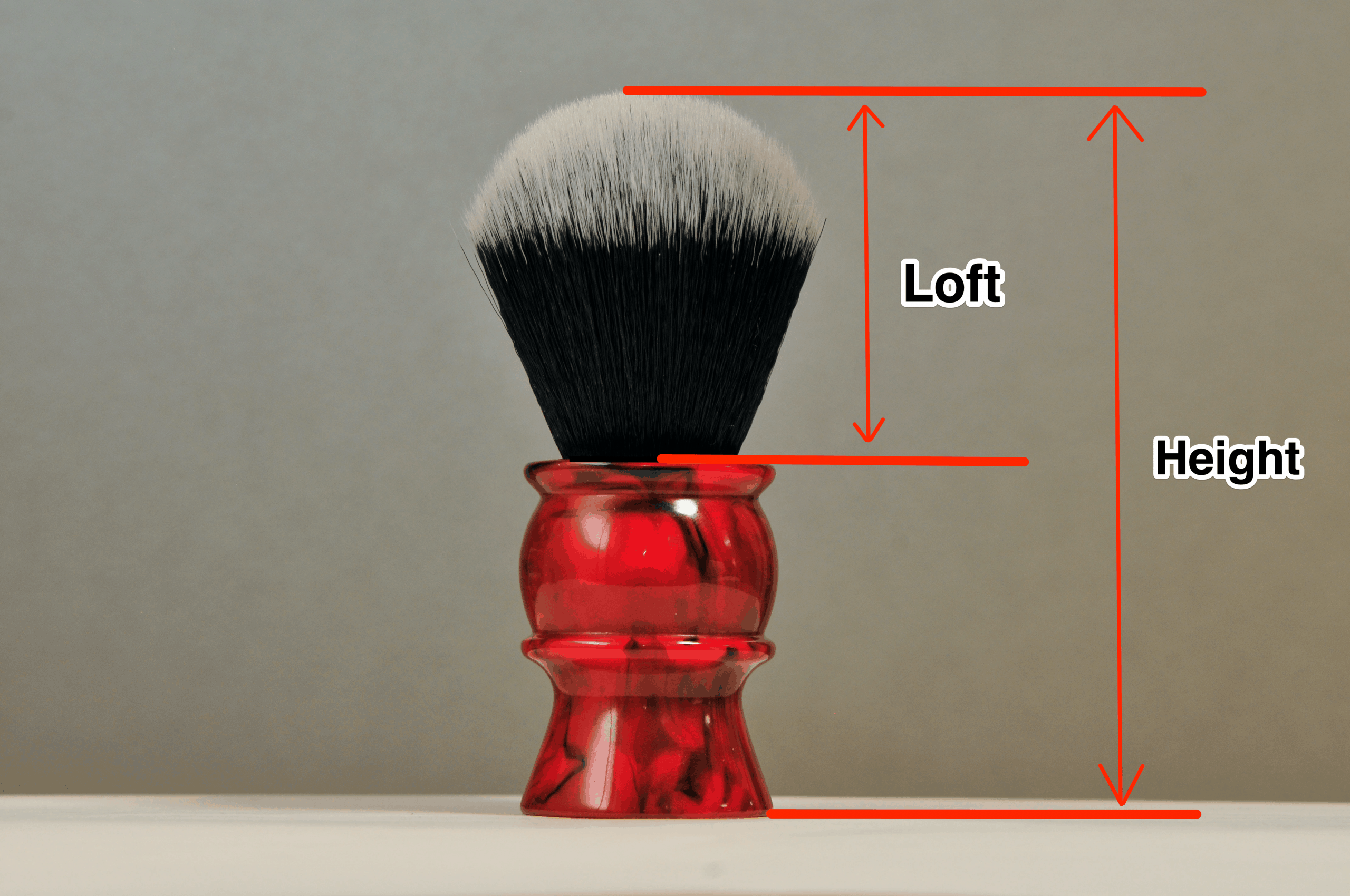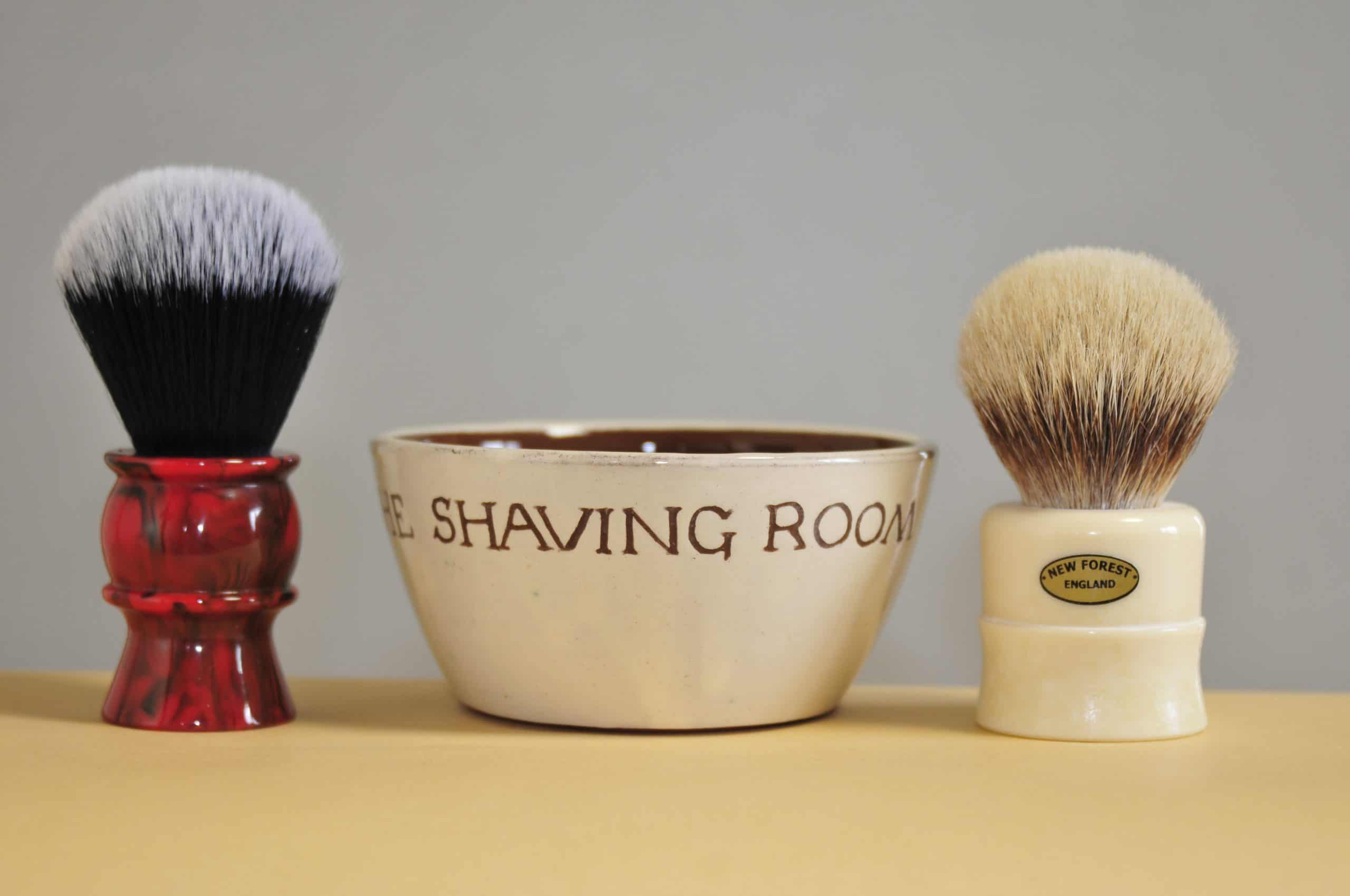Looking for your first brush? Want to treat yourself to an upgrade or something new? There are a myriad of options available for us to choose from, but where to start?
In this post, I will explain some common terms you will come across (especially when reading forums) when researching a shaving brush.
Knot
A key component of a brush, in fact it may be safe to say the key component. The knot will produce different characteristics depending on the following:
- Loft – The length of the hairs measured from the handle top to the hair tip.
- Bristle type – Badger, Boar, Synthetic, Horse.
- Density – How tightly the hair is packed into the knot (This can be difficult to measure).
- Shape – Typically a fan shape or bulb shape.
- Knot Size – This is the measurement at the base of the knot (where it gets glued into the handle).

Loft
Loft is very important in determining how the brush feels on your face.
A shorter loft will make the brush feel dense and stiff. You may find that a short loft suits you if you use hard soaps and or build the lather on your face.
A longer loft will produce a floppier brush, which will tend to feel softer and the bristles will splay more. This may suit people who enjoy using creams and or build lather in a bowl. It lends itself to a paint-on style of applying lather to the face.
Bristle
Badger – Considered by many as the best hair type to use for a brush in most part due to better water and heat retention. Badger hair is graded by the manufacturers, with higher grades commanding a higher price, it’s possible to pay a lot of money when buying some of the highest grade badger brushes from the big established brush manufacturers.
The problem with the grading system is that most manufacturers give different names for their grade, so it ends up being a little confusing when trying to compare brushes. As a general guide, we can assume:
- Pure Badger – Lowest and coarsest grade, usually dark.
- Super, Fine, Best – Finer hair which is softer than Pure and consequently holds water better (producing lather easier).
- Silvertip – Highest grade of hair and highest price. Light coloured at the tip and darker below (sometimes in bands). Softest and Finest hair.
Practically, all badger hair is sourced from China these days and recently, the ethics of how the hair is harvested has become a talking point for a lot of people. Some vendors have announced they will cease to stock / sell badger brushes after their current stock is depleted while other vendors have never stocked badger brushes due to claims of poor animal welfare. However, that topic is best left for it’s own post.
Boar – The hair is courser than that from a badger and will feel different on the skin, some people have coined the term ‘scritchy’ to describe the feeling of a boar brush.
I have always found that boar brushes need to be ‘broken in’ before they perform to their best. The process happens naturally with use and after a while you will see the tips of the hairs split.
Many people start with Boar brushes because they are cheap and readily available. You can find them in most supermarkets.
As with Badger hair, manufacturers source Boar hair from China.
Synthetic – Synthetic brushed used to have a bad reputation, the fibres were thick, scratchy and being nylon or polymer, held a little water. In recent years, though, the synthetic fibres have vastly improved. I believe the new fibres originate from the technology used in make-up brushes. The tips are now very soft and can produce lather easily. They also dry quickly, which is a good consideration for humid environments and or when travelling.
Horse – Harvested from the mane and tail of horses, possibly the most humane type of animal bristle available if that is a factor in your choice of product. I haven’t used a horsehair brush so cannot comment on the efficacy.
Shape – Fan or Bulb
In my experience, the shape of the knot is mostly aesthetic, I have tried both and can’t really notice a difference between the two. I am sure people will debate the qualities of each but for me it’s more of a preference to how it looks. For the record (not that it matters much) I am a fan of a bulb shape…
…get it?
Sorry. Moving on swiftly…
Knot Size
I recommend starting with a knot size between 21-24mm. There are larger and smaller sizes available, but choosing something in this range will provide a good base from which to explore other options.
Handle
Handles are very much a matter of personal preference and there are shapes and sizes to suit all tastes. If you have large hands then you will probably find the larger handle sizes will be more comfortable to use.
